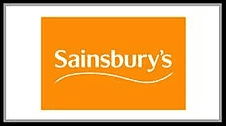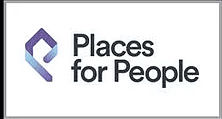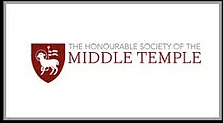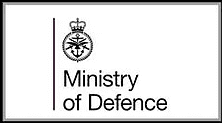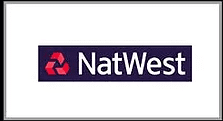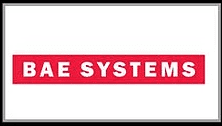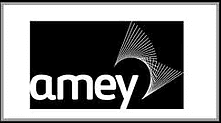Did you know that there might be a silent danger lurking in your home or workplace? Asbestos, a once widely-used building material, poses serious health risks if not properly managed. That’s where asbestos surveys come into play.
An asbestos survey is a crucial step in identifying and managing asbestos-containing materials (ACMs) within a property. But what exactly are these surveys and why are they so important?
To understand the significance of asbestos surveys in construction work, let’s delve into the historical context of hazardous materials first. Back in the day, asbestos was hailed as a miracle substance due to its fire-resistant properties and versatility in building materials. However, it wasn’t until later that we discovered the dark side of this seemingly harmless material.
Exposure to asbestos e can lead to severe health issues like lung cancer, mesothelioma, and asbestosis. These diseases often take years or even decades to develop, making early detection vital for prevention.
This is where an experienced asbestos surveyor comes in. Armed with specialized knowledge and equipment, they conduct thorough inspections to identify any potential ACMs present. From testing air quality to analysing suspect materials, their expertise ensures accurate results.
Once the asbestos survey service is complete, an asbestos report is generated detailing the findings and recommendations for management or removal of ACMs. This report serves as a valuable resource for property owners and managers in ensuring fire safety.
Considering the gravity of asbestos exposure risks and legal obligations surrounding its management, hiring professionals for an asbestos survey becomes imperative. By taking proactive measures today, we can protect ourselves from the harmful effects of this hidden menace.
So don’t wait until it’s too late! Let’s explore everything you need to know about asbestos surveys – from their purpose to best practices – ensuring your peace of mind and well-being.
Remember: It’s better safe than sorry when dealing with potential threats like asbestos materials!
Importance and Purpose of Asbestos Surveys:
Legal Requirements for Conducting Asbestos Surveys
There are strict legal requirements in place to protect the health and safety of occupants. Asbestos surveys play a crucial role in ensuring compliance with these regulations. These surveys are not just a formality; they are a legal obligation that must be fulfilled by building owners and managers.
In many countries, including the United States, it is mandatory to conduct an asbestos survey before any renovation or demolition work takes place in buildings constructed before a certain year. This is because asbestos was commonly used in construction materials until its harmful effects were discovered. The purpose of these surveys is to identify the presence of asbestos-containing materials (ACMs) within the building and assess their condition.
During an asbestos survey, trained professionals inspect various areas of the building, such as ceilings, walls, floors, pipes, insulation, and other potential locations where ACMs may be present. They collect samples for laboratory analysis to determine if asbestos fibers are present and evaluate the risk level associated with them.
Failure to comply with asbestos regulations and asbestos management surveys can result in severe penalties and fines. It’s essential for building owners and managers to take the responsibility of testing for asbestos containing materials seriously as non-compliance not only puts occupants at risk but also exposes them to potential legal liabilities.
Protecting Occupants from Exposure to Hazardous Asbestos Fibres
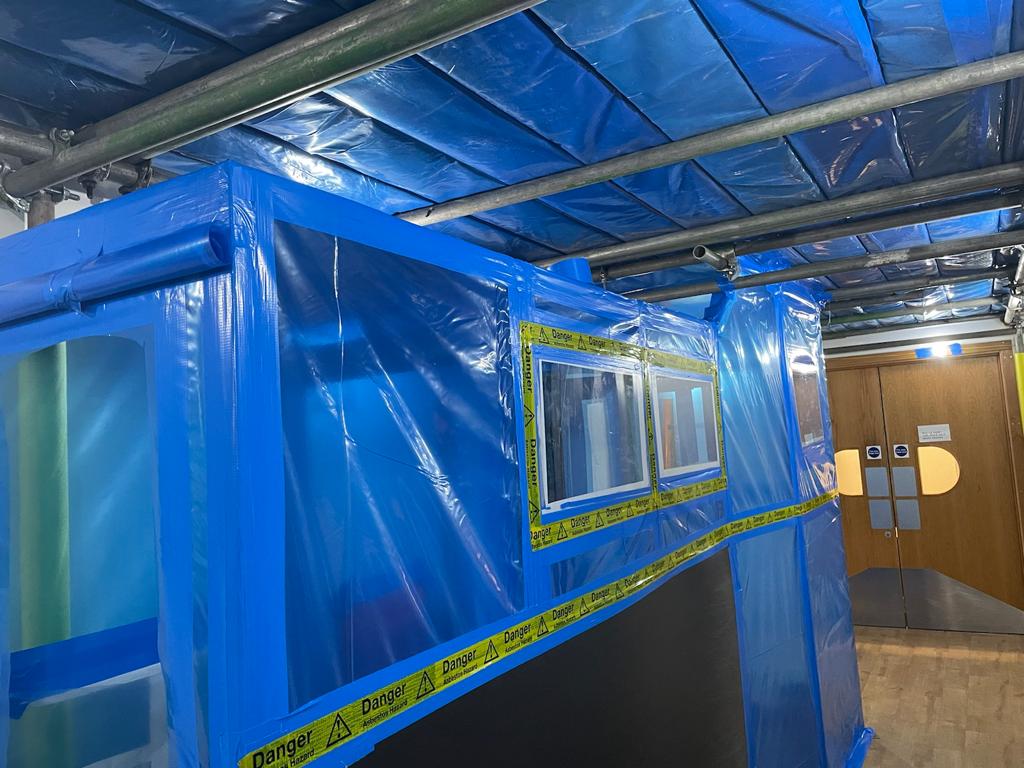

The primary purpose of conducting an asbestos survey is to protect occupants from exposure to hazardous asbestos fibres. Inhalation of these fibres can lead to serious health issues such as lung cancer, mesothelioma, and asbestosis. By identifying the presence of ACMs through surveys, appropriate measures can be taken to prevent exposure and minimize risks.
Once an asbestos survey has been conducted and ACMs have been identified, experts can develop an effective management plan tailored for each specific situation. This plan may include encapsulation or enclosure methods to prevent fibres release, regular monitoring and maintenance, or even the removal of ACMs if necessary.
By proactively addressing asbestos risks through surveys, building owners can ensure the safety and well-being of their occupants. It’s crucial to prioritize the health of individuals who live or work in buildings that may contain asbestos-containing materials.
Ensuring Compliance with Health and Safety Regulations
In addition to protecting occupants, asbestos surveys are essential for ensuring compliance with health and safety regulations. These regulations are in place to safeguard workers involved in construction, renovation, or demolition projects where they may come into contact with ACMs.
By conducting an asbestos survey before any work begins, contractors can identify potential hazards and take appropriate precautions. This includes providing workers with proper personal protective equipment (PPE), implementing safe work practices, and following specific guidelines for handling and disposing of ACMs.
Complying with health and safety regulations, such as asbestos refurbishment, is crucial to protect workers from exposure to asbestos containing materials. Conducting thorough asbestos testing and asbestos management surveys demonstrates a commitment to maintaining a safe working environment and upholding industry standards. It also helps reduce the risk of legal consequences for building owners or contractors.
Different Types of Asbestos Surveys: A Comprehensive Overview
Management, refurbishment/demolition, and reinspection surveys explained
There are different types that serve specific purposes depending on the area or location being assessed. Understanding these survey types is crucial to ensure the safety and compliance of a building or project. Let’s dive into the three main types of asbestos surveys: management surveys, refurbishment/demolition surveys, and reinspection surveys.
- Management Surveys:
- Management surveys are conducted to identify any potential asbestos-containing materials (ACMs) within a building that may pose a risk to occupants or workers.
- These asbestos surveys involve inspecting accessible areas of the building and collecting samples for laboratory analysis to conduct asbestos testing. The results of the analysis are compiled into an asbestos report, which identifies any asbestos containing materials present in the building. These surveys are conducted in accordance with asbestos regulations to ensure compliance and safety.
- The aim is to create an asbestos register and management plan that outlines how ACMs will be managed safely over time.
- Management surveys are typically carried out in occupied buildings where regular maintenance work is expected. These surveys involve the testing and inspection of asbestos containing materials, followed by the preparation of an asbestos report.
- Refurbishment/Demolition Surveys:
- Refurbishment/demolition surveys, which include asbestos testing, are more intrusive and extensive than management surveys. These surveys provide a comprehensive asbestos report.
- Asbestos testing and asbestos report are conducted prior to major renovation or demolition projects to identify all ACMs that could be disturbed during the works.
- These surveys involve thorough inspections for asbestos testing of all accessible areas including concealed spaces such as wall cavities and ceiling voids. The results will be included in the asbestos report.
- Samples are collected for asbestos testing from suspected ACMs in a laboratory.
- The purpose of refurbishment/demolition surveys is to ensure proper planning and implementation of control measures before any construction or demolition activities commence.
- Reinspection Surveys:
- Reinspection surveys are carried out periodically on buildings where previous management or refurbishment/demolition surveys have been conducted.
- Their purpose is to assess the condition of known ACMs identified in previous reports and update the asbestos register accordingly.
- Reinspection surveys help monitor the state of ACMs over time and determine if any deterioration or damage has occurred.
- Regular reinspection surveys are essential to ensure that proper management and control measures are in place to prevent asbestos exposure.
Varied approaches depending on the type of building or project
Each type of asbestos survey requires a tailored approach based on the specific building or project being assessed. Factors such as the age, size, and construction materials used in the building play a significant role in determining the extent and methodology of the survey. Let’s explore how these factors influence survey approaches:
- Building Age:
- Older buildings are more likely to contain ACMs, especially those constructed before the mid-1980s when asbestos use was prevalent.
- For older buildings, more comprehensive surveys may be required due to potential ACMs being present in various materials such as insulation, flooring, ceiling tiles, and pipe lagging.
- Newer buildings may still require surveys as some products containing asbestos were used until 2000.
- Building Size:
- The size of a building affects the time and resources needed for an asbestos survey.
- Larger buildings may have more complex structures with numerous rooms, floors, and hidden spaces that require thorough inspection.
- Surveyors need to allocate sufficient time for detailed examinations to identify all possible ACMs accurately.
- Construction Materials:
- Different types of construction materials have varying levels of risk associated with them regarding asbestos content.
- Buildings constructed using high-risk materials like sprayed coatings or loose-fill insulation may require more extensive sampling and analysis during surveys.
Tailoring survey methods based on risk assessment
To ensure effective asbestos management, it is crucial to tailor survey methods based on a thorough risk assessment. The risk assessment helps determine which areas within a building are most likely to contain ACMs and need closer examination. Here’s how survey methods can be tailored based on risk assessment:
- High-Risk Areas:
- High-risk areas, such as boiler rooms, pipe ducts, and fireproofing materials, are more likely to contain ACMs.
Understanding Management Asbestos Surveys: Ensuring Safety and Compliance
Assessing the condition and location of ACMs in a building
One crucial step is conducting an asbestos survey. This survey involves assessing the condition and location of Asbestos-Containing Materials (ACMs) within a building. The purpose is to identify any potential hazards and determine the appropriate measures to control them.
During the survey, qualified professionals inspect various areas of the premises, including walls, ceilings, floors, insulation materials, pipes, boilers, and electrical systems. They carefully examine these components for signs of asbestos presence or damage that could release harmful fibres into the air.
The assessment includes taking samples of suspected ACMs for laboratory analysis. By identifying the type and condition of asbestos present in a building, experts can gauge the level of risk it poses to occupants.
It’s important to note that management surveys are distinct from refurbishment or demolition surveys. While refurbishment or demolition surveys focus on preparing for major renovations or building demolitions respectively, management surveys are conducted on existing buildings to ensure ongoing safety and compliance with regulations.
Developing an effective management plan for controlling asbestos risks
Once an asbestos survey has been conducted and potential hazards have been identified, it is essential to develop an effective management plan. This plan outlines how risks associated with ACMs will be controlled within the premises.
The plan should consider factors such as the condition of ACMs, their accessibility to occupants or maintenance personnel, and any necessary remediation actions. It should also include details about ongoing monitoring procedures to ensure that control measures remain effective over time.
To develop a robust management plan, it is crucial to consult relevant guidelines provided by regulatory bodies such as the Health and Safety Executive (HSE). These guidelines outline best practices for managing asbestos risks in different types of premises.
By following these guidelines and incorporating specific site requirements into the management plan, building owners can ensure the safety of occupants and comply with regulations. Regular reviews and updates to the plan are also necessary to accommodate any changes in the building’s condition or occupancy.
Regular monitoring to maintain a safe environment for occupants
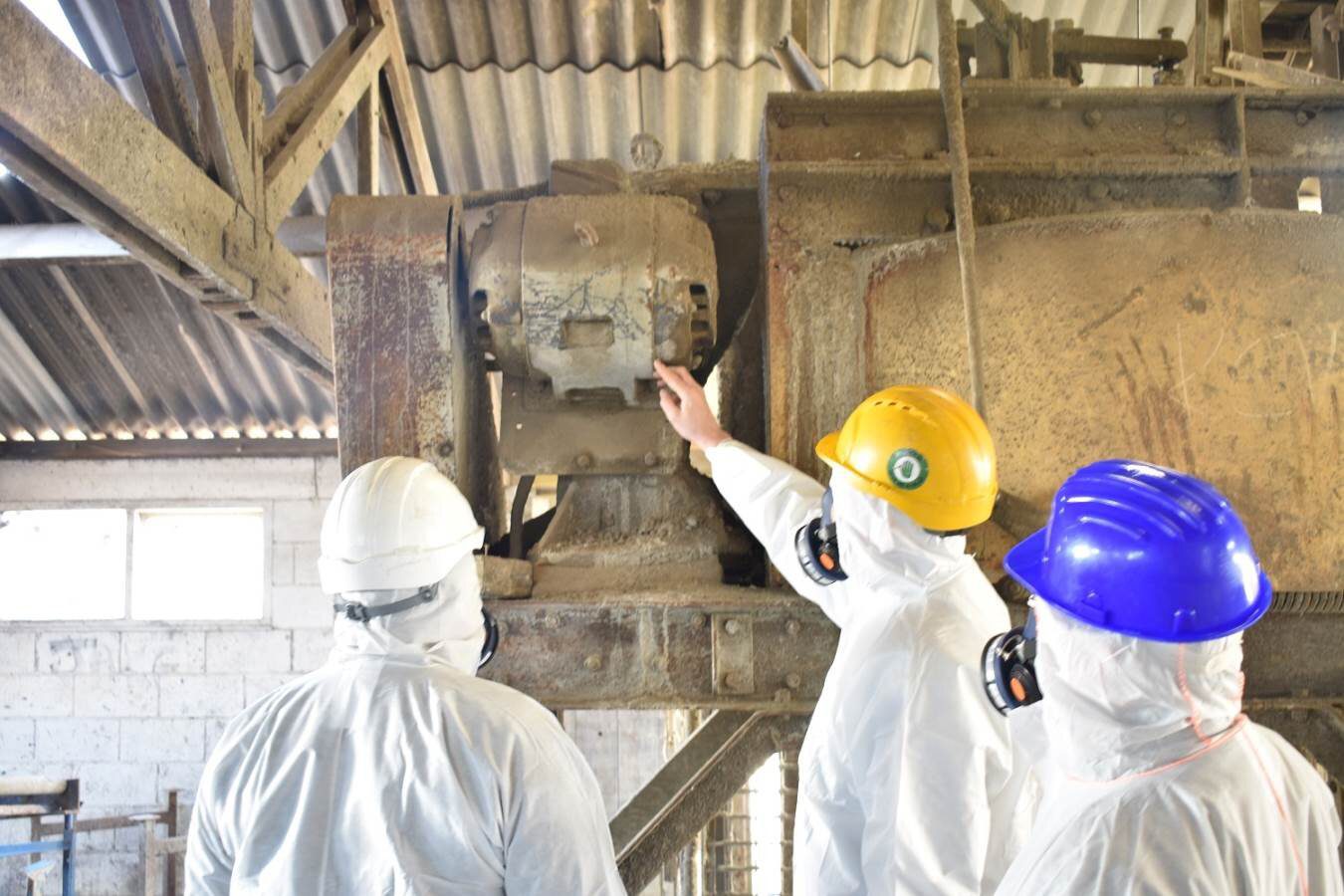

Managing asbestos risks is an ongoing process that requires regular monitoring. This ensures that control measures remain effective and that any new hazards are promptly identified and addressed.
Monitoring involves periodic inspections of ACMs, air quality testing, and reassessment of the management plan’s effectiveness. These activities help identify any deterioration or damage to ACMs that could increase the risk of fibres release.
Air quality testing is crucial to monitor the concentration of airborne asbestos fibres within the premises. By conducting air sampling at regular intervals, building owners can assess whether their control measures are effectively preventing fibre release into occupied areas.
If monitoring reveals any issues or breaches in control measures, immediate action should be taken to rectify the situation. This may involve repairing damaged ACMs, improving containment systems, or implementing additional control measures as necessary.
By prioritizing regular monitoring, building owners can maintain a safe environment for occupants and demonstrate their commitment to compliance with asbestos regulations.
When is a Management Asbestos Survey Required?
Obligations for duty holders
Under current legislation, duty holders have specific obligations. One of these obligations is to conduct a management asbestos survey. This survey is crucial in identifying the presence and condition of asbestos-containing materials (ACMs) within a building or property.
Instances where a management survey is necessary
There are various situations where a management asbestos survey becomes necessary. One such instance is before any property transactions or renovations take place. It is essential to conduct this survey before carrying out any work that may disturb ACMs, as it helps ensure the safety of workers and occupants.
During property transactions, potential buyers need to be aware of any asbestos risks associated with the building they are purchasing. A management survey provides detailed information about the location and condition of ACMs, allowing buyers to make informed decisions.
Similarly, before undertaking renovations or refurbishments, it is vital to identify any ACMs that may be affected by the proposed works. The survey will help determine if there are any risks associated with disturbing these materials during construction activities.
The importance of periodic reassessment
Once an initial management asbestos survey has been conducted, it does not mean that the process ends there. Periodic reassessment plays a critical role in ensuring continued safety within the premises.
The conditions of ACMs can change over time due to various factors such as aging, deterioration, or environmental influences. Regular reassessment allows duty holders to monitor these changes and update their asbestos management plan accordingly.
By conducting periodic surveys, duty holders can identify any new ACMs that may have been introduced into the building since the last assessment. They can also assess whether existing materials have deteriorated or become more hazardous over time.
Regular reassessment helps prevent unexpected exposure to asbestos by identifying potential risks early on. It ensures that appropriate control measures are in place and that any necessary remedial actions are taken promptly.
Explaining Refurbishment/Demolition Asbestos Surveys: Ensuring Safe Removal
Identifying all ACMs that could be disturbed during refurbishment or demolition work
During refurbishment or demolition work, it is crucial to identify all asbestos-containing materials (ACMs) that may be disturbed. This step is essential to ensure the safety of workers and occupants of the building. Demolition surveys specifically focus on identifying ACMs in buildings that are scheduled for complete demolition. On the other hand, refurbishment surveys are conducted when a building is being renovated or refurbished.
To identify potential ACMs, surveyors employ detailed inspection techniques such as visual inspections, sampling, and testing. Visual inspections involve thoroughly examining the premises, including hidden areas like ceiling voids and wall cavities. Surveyors carefully look for any signs of damaged or deteriorating materials that could potentially contain asbestos.
Sampling is another crucial aspect of these surveys. It involves collecting small pieces of suspected ACMs and sending them to a laboratory for analysis. The samples are analyzed using specialized techniques such as polarized light microscopy (PLM) or transmission electron microscopy (TEM). These methods help determine if the material contains asbestos fibers and provide information about their type and concentration.
By employing these inspection techniques, refurbishment/demolition asbestos surveys ensure that all potential sources of asbestos exposure are identified before any construction activities commence.
Safely removing or encapsulating identified ACMs prior to construction activities
Once the presence of ACMs has been established through thorough surveying, it becomes necessary to safely remove or encapsulate these materials before any construction work begins. The goal is to minimize the risk of releasing asbestos fibers into the air during renovation or demolition activities.
The safest approach is often removal, especially if the ACMs are in poor condition or likely to be disturbed during construction work. Trained professionals should carry out this process following strict guidelines and regulations set by local authorities. They use specialized equipment and follow proper containment procedures to ensure the safe removal of ACMs.
Encapsulation is an alternative method used when removing the asbestos-containing materials entirely may not be feasible or practical. This involves applying a sealant or coating over the ACMs to prevent the release of fibers. Encapsulation can provide a temporary solution, but it requires regular monitoring and maintenance to ensure its effectiveness over time.
Both removal and encapsulation methods aim to eliminate or reduce the risk of asbestos exposure during refurbishment or demolition work. By taking these precautions, construction activities can proceed with confidence, knowing that potential health hazards associated with asbestos have been properly addressed.
What Happens During and After an Asbestos Survey?
Step-by-step process followed by surveyors during an asbestos survey
- Initial Assessment: The first step in an asbestos survey is conducting an initial assessment of the premises. Surveyors will evaluate the building’s structure, materials used, and any potential sources of asbestos.
- Identification: Once the initial assessment is complete, surveyors will proceed with identifying areas that may contain asbestos-containing materials (ACMs). This involves visually inspecting surfaces, fixtures, and fittings for signs of asbestos.
- Sampling: If there are suspected ACMs present, the surveyors will collect samples for laboratory analysis. They take cautionary measures to avoid releasing fibres into the air during this process. Samples are carefully sealed and labelled to maintain integrity.
- Laboratory Analysis: The collected samples are sent to a certified laboratory for analysis. Highly trained analysts use specialized techniques to determine if the material contains asbestos fibres. The results from these tests provide accurate information about the presence and type of asbestos.
- Risk Assessment: After analysing the samples, surveyors perform a risk assessment to evaluate the potential hazards associated with any identified ACMs. This helps prioritize necessary actions based on the level of risk posed by each material or area.
- Reporting: Once all assessments and analyses are complete, surveyors compile comprehensive reports detailing their findings and recommendations regarding any identified ACMs. These reports typically include photographs, sample analysis results, risk assessments, and suggestions for managing or removing asbestos if required.


Collecting samples for laboratory analysis
During an asbestos survey, collecting samples for laboratory analysis is a crucial step in determining whether materials contain hazardous levels of asbestos fibres. To ensure accuracy and safety:
- Surveyors wear appropriate personal protective equipment (PPE) such as disposable coveralls, gloves, masks or respirators.
- They isolate the sampling area by sealing it off with plastic sheeting to prevent cross-contamination.
- Using specialized sampling tools, surveyors carefully collect representative samples from suspected ACMs. This may involve taking small pieces of material or using a coring tool to extract samples from larger surfaces.
- The collected samples are securely sealed in airtight containers and labelled with unique identifiers for tracking purposes.
- Surveyors maintain a strict chain of custody to ensure the integrity of the samples during transportation to the laboratory.
Once at the laboratory, trained analysts employ various techniques, including polarized light microscopy (PLM) or transmission electron microscopy (TEM), to examine and identify asbestos fibers in the samples. The results provide essential information about the presence and type of asbestos within the materials.
Providing comprehensive reports with recommendations after the survey
After completing an asbestos survey, surveyors generate detailed reports that serve as valuable references for property owners, managers, or occupants. These reports typically include:
- Findings: A summary of all identified ACMs along with their locations within the building. This helps stakeholders understand where potential risks exist.
- Sample Analysis Results: The laboratory analysis results for each sampled material are presented, indicating whether asbestos fibres were found and at what concentration level.
- Risk Assessments: Based on sample analysis results and other factors such as material condition and accessibility, risk assessments are provided for each identified ACM. These assessments determine if immediate action is necessary or if managing the material in place is sufficient.
- Recommendations: Clear recommendations are given regarding how to manage any identified ACMs effectively. This may include options such as encapsulation, enclosure, removal, or ongoing monitoring programs.
- Health and Safety Considerations: Reports also highlight any health and safety precautions that need to be taken when working near or handling ACMs to prevent fibre release and protect occupants’ well-being.
It’s crucial for property owners to review these comprehensive reports carefully and consult with professionals experienced in dealing with asbestos-related issues before making any decisions regarding the management or removal of ACMs. By following the recommendations provided, individuals can ensure a safer environment for all occupants.
Remember, asbestos surveys are essential for identifying potential risks associated with asbestos-containing materials.
Reinspection Asbestos Survey: Continual Monitoring for Safety
Periodic reinspection surveys to monitor any changes in ACM conditions
Regular inspections are crucial. In the case of asbestos-containing materials (ACMs), periodic reinspection surveys play a vital role in monitoring any changes in their condition. These surveys involve thoroughly examining the ACMs to assess their current state and identify any potential risks.
During a reinspection survey, experts carefully inspect all areas where ACMs are present, including walls, ceilings, pipes, and insulation. They look for signs of deterioration, damage, or disturbance that may have occurred since the previous inspection. By conducting these regular assessments, property owners can stay proactive in managing asbestos-related hazards.
Assessing effectiveness of previous control measures
One of the primary objectives of a reinspection asbestos survey is to evaluate the effectiveness of previous control measures implemented to mitigate asbestos-related risks. This step involves assessing whether the existing management strategies have been successful in minimizing exposure and maintaining a safe environment.
The experts conducting the survey will review past reports and examine records related to maintenance activities performed on ACMs. They will also consider fire risk assessments conducted on the premises and air testing results obtained during previous inspections. This comprehensive evaluation helps determine if further action is required to enhance safety measures or if existing controls need adjustments.
Updating the asbestos management plan based on reinspection findings
Based on the findings from a reinspection survey, an updated asbestos management plan can be developed or revised. This plan outlines specific actions that need to be taken regarding ACMs within a building or construction site. It serves as a roadmap for property owners and managers to effectively manage asbestos-related risks moving forward.
The updated plan may include recommendations such as additional air testing and sampling at specific locations where potential hazards were identified during the inspection. It may also outline steps for ongoing monitoring and maintenance procedures necessary for the safe management of ACMs. By incorporating the reinspection findings into the asbestos management plan, property owners can ensure that their facilities remain compliant with regulations and prioritize the well-being of occupants.
Uncovering Damaged or Disturbed Asbestos: The Role of Surveys
Identifying ACMs that have been damaged, deteriorated, or disturbed
Asbestos-containing materials (ACMs) can pose a serious health risk if they become damaged, deteriorated, or disturbed. That’s where asbestos surveys come into play. These surveys are conducted by trained professionals called surveyors who specialize in investigating the presence and condition of asbestos in various settings.
When conducting an asbestos survey, the surveyor carefully inspects different areas of a building to identify any ACMs that may be damaged or at risk of releasing harmful fibres. They examine not only visible surfaces but also hidden areas where asbestos might be concealed, such as behind walls or under flooring.
The surveyor follows a systematic approach to ensure thorough coverage of all relevant spaces. They use specialized tools and techniques to collect samples for analysis and determine whether those materials contain asbestos. By identifying damaged or deteriorated ACMs during the survey process, they help assess the potential risk of fibres release and exposure.
Assessing the potential risk of fibresrelease and exposure
Once an asbestos-containing material has been identified as damaged, deteriorated, or disturbed during a survey, it is crucial to assess the potential risk it poses in terms of fibre release and subsequent exposure. The condition of the ACM plays a significant role in determining this risk.
Surveyors evaluate several factors when assessing e release risks. These include the extent and severity of damage to the ACM, its friability (ease with which it crumbles), and any ongoing works or activities taking place nearby that could disturb it further. They also consider environmental factors like air circulation patterns within the area.
Based on their findings from the survey report, surveyors provide recommendations on how to manage these risks effectively. This may involve implementing appropriate control measures to mitigate further disturbance or damage to ACMs until remedial actions can be taken.
Implementing appropriate control measures to mitigate risks
Survey reports serve as a valuable resource for duty holders, who are responsible for managing asbestos within their premises. The findings from the survey report inform duty holders about the presence of damaged or disturbed ACMs and guide them in implementing suitable control measures.
Control measures can vary depending on the specific circumstances and severity of the asbestos-related risks identified during the survey. They may include actions such as encapsulation (sealing off ACMs), enclosure (creating a physical barrier around ACMs), or removal of damaged materials altogether.
Duty holders must prioritize the safety and well-being of occupants, workers, and visitors by diligently following the recommendations provided in the survey report. These control measures not only help mitigate immediate risks but also contribute to long-term asbestos management strategies within a building or facility.
By conducting regular surveys and promptly addressing any identified issues, duty holders fulfil their part in ensuring a safe environment while adhering to legal obligations related to asbestos management.
Advice on Choosing the Right Type of Asbestos Survey for Your Needs:
Factors to Consider When Selecting an Asbestos Survey Type
- Building Size and Usage: The first factor to consider when choosing an asbestos survey type is the size and usage of your building. Different types of buildings may have varying levels of asbestos-containing materials (ACMs) based on their construction history. For instance, older residential properties are more likely to contain ACMs in their insulation or flooring materials, while commercial buildings might have ACMs in ceiling tiles or pipe insulation.
- Project Scope: Another crucial aspect is the scope of your project. Are you planning a renovation, demolition, or routine maintenance? The extent of work being carried out will determine the level of detail required in your asbestos survey. A refurbishment or demolition survey is more comprehensive compared to a management survey since it involves identifying all potential ACMs that could be disturbed during the project.
- Regulatory Compliance: It’s essential to ensure that your chosen asbestos survey meets regulatory requirements. Depending on your location, there may be specific guidelines and regulations governing asbestos surveys that need to be followed strictly. Engaging a professional asbestos consultant can help ensure compliance with these regulations and avoid any legal issues down the line.
Understanding Specific Requirements Based on Building Usage and Project Scope
- Management Surveys: If you own or manage a property, a management survey is essential for assessing its condition and managing any identified ACMs properly. This type of survey involves inspecting accessible areas for potential ACMs and assessing their condition without causing damage.
- Refurbishment/Demolition Surveys: If you are planning significant renovations or demolitions, you’ll need a refurbishment/demolition survey before commencing work. This thorough inspection aims to locate all possible ACMs within the area where work will take place so they can be safely removed or managed before any disturbance occurs.
- Re-inspection Surveys: Regular re-inspection surveys are necessary to monitor the condition of any previously identified ACMs in your building. These surveys help ensure that any ACMs remain undisturbed and continue to be managed effectively, reducing the risk of exposure.
Seeking Professional Advice to Ensure Compliance with Regulations
- Engage an Asbestos Consultant: Given the complexity and potential health risks associated with asbestos, it’s advisable to seek professional advice from an experienced asbestos consultant. They can guide you through the process of selecting the right type of asbestos survey based on your specific needs and ensure compliance with local regulations.
- Certification and Expertise: When choosing an asbestos consultant, verify their certification and expertise in conducting thorough surveys. Look for certifications such as BOHS P402 or P405, which demonstrate their competence in asbestos inspection and management.
- Experience in Your Industry: It’s beneficial to engage a consultant who has experience working within your industry or building type. They will have a better understanding of the potential ACMs commonly found in similar structures, allowing them to conduct more accurate surveys tailored to your specific requirements.
Remember, when dealing with asbestos-related matters, it is always crucial to prioritize safety and compliance with regulations. By considering factors like building size and usage, project scope, and seeking professional advice from certified consultants experienced in your industry, you can choose the right type of asbestos survey that best suits your needs while ensuring the well-being of everyone involved.
Sources:
Expert Guidance on Conducting Effective Asbestos Surveys:
Importance of Engaging Qualified and Experienced Asbestos Surveyors
It is crucial to engage the services of qualified and experienced asbestos surveyors. These professionals have the necessary knowledge and expertise to conduct thorough inspections and assessments, ensuring that all potential risks associated with asbestos-containing materials (ACMs) are identified and properly managed.
Asbestos surveyors undergo rigorous training and certification programs to develop their skills in identifying, sampling, and assessing ACMs. They understand the different types of asbestos materials commonly found in buildings, as well as the specific locations where they may be present. By engaging these experts, you can rest assured that your survey will be conducted with precision and accuracy.
Qualified asbestos surveyors also possess a deep understanding of recognized industry standards and guidelines. They stay up-to-date with the latest regulations set by authoritative bodies such as the United Kingdom Accreditation Service (UKAS) and Health and Safety Executive (HSE). By following these standards, they ensure that your survey meets all legal requirements, providing you with reliable results.
Following Recognized Industry Standards and Guidelines
To ensure an effective asbestos survey, it is essential to adhere to recognized industry standards and guidelines. These standards provide a framework for conducting surveys that guarantee accurate identification and assessment of ACMs.
One such standard is the HSE’s “Surveying, Sampling, And Assessment Of Asbestos-Containing Materials” guidance document (HSG264). This comprehensive guide outlines best practices for carrying out asbestos surveys in various settings – from domestic properties to commercial buildings. It covers everything from pre-survey preparations to reporting findings accurately.
Another critical standard is UKAS accreditation. UKAS is the sole national accreditation body recognized by the UK government for assessing organizations offering testing services. Working with a UKAS-accredited asbestos surveyor ensures that your surveyor has undergone independent evaluation against internationally recognized standards. This accreditation provides an additional level of assurance regarding the quality and reliability of their services.
By following these industry standards and guidelines, you can be confident that your asbestos survey will be conducted with precision, ensuring accurate identification and assessment of ACMs.
Ensuring Accurate Identification and Assessment of ACMs
Accurate identification and assessment of asbestos-containing materials (ACMs) are crucial in managing the risks associated with asbestos. Engaging a qualified asbestos surveyor is essential to ensure this accuracy.
During the survey process, the asbestos surveyor will carefully inspect your property for any potential ACMs. They will take samples from suspected materials for laboratory analysis to confirm whether they contain asbestos fibers. By using specialized equipment and techniques, they can accurately identify even small amounts of asbestos present in various building components such as insulation, flooring, or ceiling tiles.
Once identified, the surveyor will assess the condition of ACMs to determine their risk level. This assessment helps prioritize actions required to manage or remove the materials safely. The information gathered during the survey is then compiled into a detailed report that includes recommended measures for managing any identified risks effectively.
Employers and commercial property owners have a legal obligation to maintain an up-to-date record of ACMs within their premises. An expert asbestos surveyor can provide invaluable assistance in fulfilling this requirement by conducting regular surveys and updating records accordingly.
In addition to identifying and assessing ACMs within buildings, some specialized asbestos surveyors also offer air monitoring services. This involves collecting air samples from different areas of a building to check for airborne asbestos fibers. By analyzing these samples in accredited laboratories, they can determine if there is any risk of exposure to airborne asbestos particles.
The Importance of Regular Asbestos Surveys for Safety and Compliance:
Regular asbestos surveys are crucial for ensuring safety and compliance in various settings. These surveys serve the purpose of identifying and assessing the presence of asbestos-containing materials (ACMs) within buildings, structures, or facilities. By conducting these surveys, you can proactively manage the risks associated with asbestos exposure, protect occupants’ health, and comply with legal obligations.
A comprehensive overview of different types of asbestos surveys is essential to understand their significance fully. Management asbestos surveys play a pivotal role in ensuring safety and compliance by identifying the location, condition, and extent of ACMs. These surveys help establish effective management plans to control potential risks and prevent accidental disturbance.
Knowing when a management asbestos survey is required is equally important. This type of survey should be conducted before any refurbishment or demolition work takes place to ensure safe removal of ACMs. It helps determine whether any additional precautions need to be taken during the project to minimize exposure risks.
During an asbestos survey, qualified professionals inspect the premises thoroughly using various techniques such as visual inspections, sampling, and laboratory analysis. They document their findings in a detailed report that outlines the location and condition of identified ACMs. This report serves as a valuable resource for making informed decisions regarding risk management strategies or necessary remedial actions.
Continual monitoring for safety is achieved through reinspection asbestos surveys. These periodic assessments help ensure that previously identified ACMs remain undisturbed or properly managed over time. By conducting these follow-up surveys at regular intervals, you can maintain a safe environment for occupants while staying compliant with regulations.
Asbestos surveys also play a critical role in uncovering damaged or disturbed asbestos materials that may pose immediate risks. By promptly identifying such situations through regular inspections, you can take appropriate measures to mitigate hazards and protect people from potential exposure.
To choose the right type of asbestos survey for your needs, it’s advisable to seek expert guidance from qualified professionals. They can assess your specific requirements, provide tailored recommendations, and ensure that the survey aligns with safety regulations and compliance standards.
In conclusion, regular asbestos surveys are essential for maintaining a safe and compliant environment. By understanding their importance, different types, and the process involved, you can effectively manage asbestos risks in your premises. Prioritizing these surveys not only protects occupants’ health but also demonstrates your commitment to safety and compliance.
FAQs
What are the potential health risks associated with asbestos exposure?
Exposure to asbestos fibres can lead to serious health conditions such as lung cancer, mesothelioma, and asbestosis. It is crucial to identify and manage asbestos-containing materials to minimize the risk of exposure.
Are there any legal obligations regarding asbestos surveys?
Yes, depending on your jurisdiction, there may be legal requirements for conducting regular asbestos surveys in certain buildings or before undertaking refurbishment or demolition projects. Compliance with these regulations is essential for ensuring the safety of occupants.
Can I conduct an asbestos survey myself?
It is strongly advised against conducting an asbestos survey yourself unless you have received appropriate training and certification. Asbestos surveys require specialized knowledge and equipment to ensure accurate identification and assessment of ACMs.
How often should reinspection asbestos surveys be conducted?
The frequency of reinspection surveys depends on various factors such as the condition of previously identified ACMs, building usage, occupancy changes, or any renovation activities. Consultation with experts will help determine the appropriate intervals for reinspection.
Can I remove or handle ACMs without a survey?
No. It is crucial to conduct an asbestos survey before attempting any removal or handling of ACMs. This ensures proper planning and implementation of control measures to prevent exposure risks during such activities.




